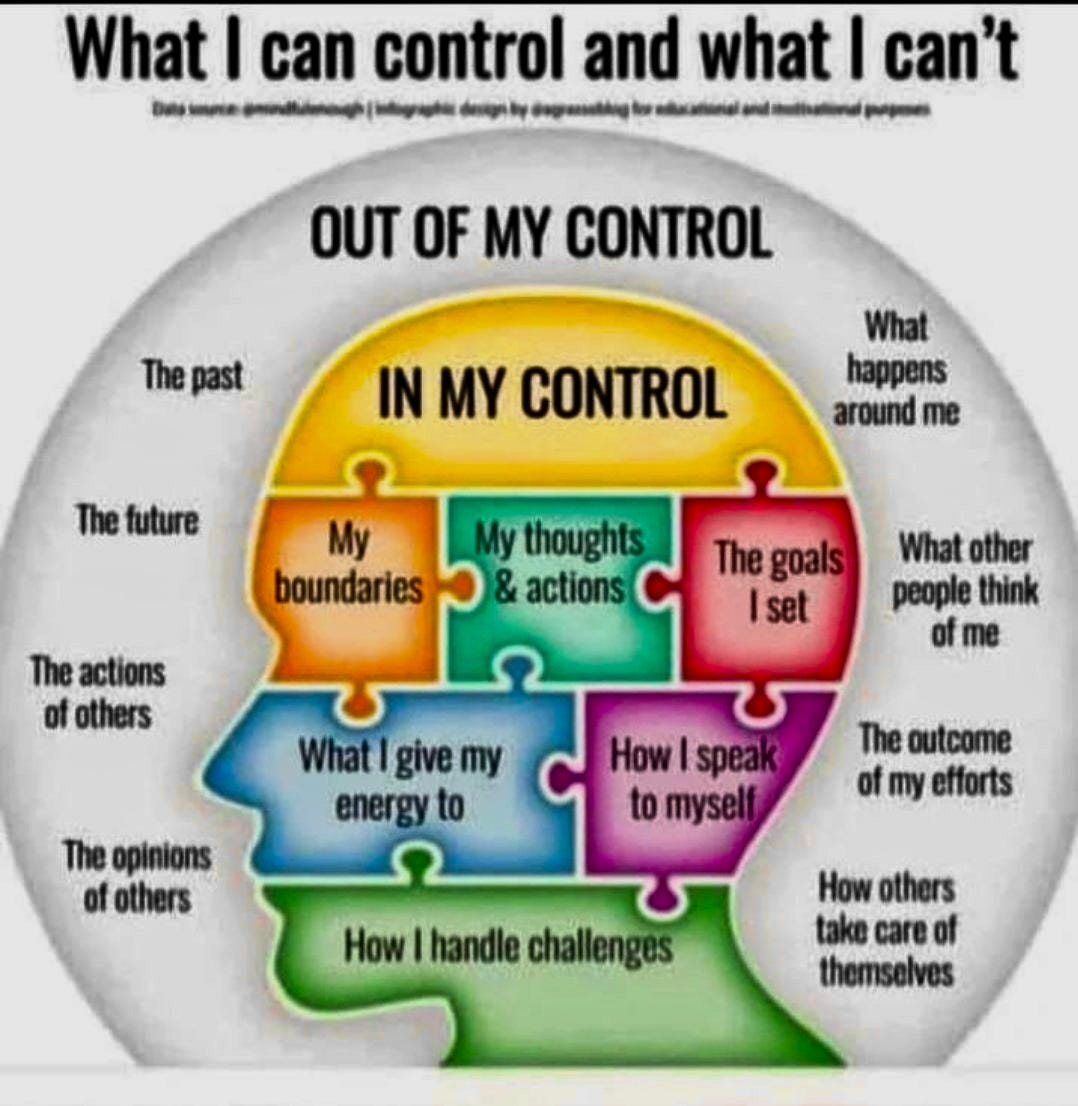Toolbox Tip: Identifying What We Can Control and What We Can't
Control. This little word can create big problems. As humans we can have complicated relationships with this concept. Feeling as if we have control over situations can bring a sense of predictability and comfort. However when we feel a lack of control, it can be very unsettling and distressing. What is tricky about control is we try to control things that we have no power over and this is where problems arise. Knowing the difference between what we can and can’t control plays a significant role in our emotional well-being. This Toolbox Tip focuses on learning the difference between what we can and can’t control and why this skill is beneficial for emotional well-being.
Let’s start off with taking a closer look at some definitions of control (from Merriam Webster Dictionary):
To exercise restraining or directing influence over (Regulate).
To have power over (Rule).
When we think about our ability to regulate or rule people or situations it quickly becomes clear that most things are outside of our control. We are not puppet masters and quite frankly, it would be exhausting to have that kind of power. We can’t control other people or situations, we can only control the way we choose to interact with them. It is easy to want things or people to be different and direct our energy toward trying to change or control those two things, however it is futile and frustrating. This is why it is important to be aware of where you are directing your mental energy. The first step, and often hardest step, is noticing this difference. Identifying what we can and can’t control allows us to focus on things we can change.
Let’s take a look at some examples:
Can’t control: Others’ behavior. Can control: How we respond to others’ behaviors
Can’t control: Our thoughts. Can control: Whether we believe/act on them
Can’t control: Others’ beliefs. Can control: How we engage with them
Can’t control: The past. Can control: How we engage in the present and beyond
Can’t control: The outcome of our actions. Can control: The effort we put into something
It’s easy for us to get stuck trying to control things we can’t which creates feelings of helplessness. Instead of spending our energy focusing on things we can control is a much better use of our time. It doesn’t mean we won’t feel frustrated, hurt or distress about things out of our control. However, instead of responding to our negative feelings by trying to change or influence things out of our control, we can focus on engaging in a more productive course of action. This takes practice and every situation is a little different. The purpose of this foundational Toolbox Tip is to enhance our ability to accurately identify what is within our control and what is not. While it may sound simple, it often isn’t.
Tips:
Check in. When you notice negative feelings of distress or emotions arise, what is creating it? Is it external (situations, others) or internal (personal thoughts, beliefs). Ask yourself, is this something I can change? Remember, we can’t change others or a situation itself.
Assess what you can control. Hint, we can control our responses, behaviors, and whether we believe our thoughts. Think about possible outcomes of a situation and how you want to engage. For example, say you are driving and someone cuts you off in traffic. You slam on the brakes and avoid an accident, yet you are distressed and angry. How do you respond? There are options that may exacerbate the situation or de-escalate it. You can respond with anger and outrage or you can try to keep a safe distance from the careless driver. These options will result in very different experiences for you. Think about how it plays out for you and which one serves you best. While you can’t control the other driver or their behavior, you can choose how you respond.
Notice where you direct your energy. Are you focusing on changing/controlling external factors? This will feel frustrating and serve as a cue. Gently remind yourself to focus on what you can control. This also means accepting things we cannot change rather than continually wishing for them to be different.
As with any behavior change, becoming aware of the behavior and catching it is the first (and sometimes hardest) step. We often live on autopilot and don’t recognize patterns or the negative impact they have. When we become aware of our behaviors and reactions, it allows us the opportunity to become more intentional with our responses. As a result, we can be more productive in how we engage with others and the world around us.
If you enjoy Mental Tune-Ups, please let others in your community know. Mental Tune-Ups is public so please share if you think someone else may benefit from reading it. All are welcome! If you haven’t subscribed yet, it’s easy and free!




